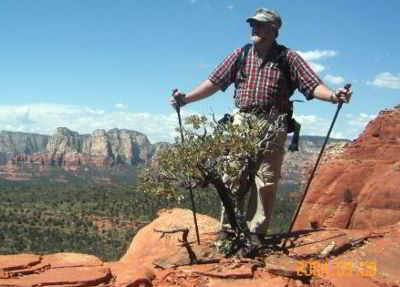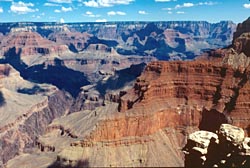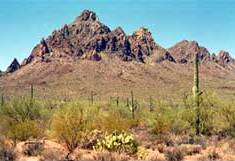Arizona
 Sedona Canyon Sedona Canyon
 Arizona
Arizona
On March 14, 2010 the Eastern Native Tree
Society and Western Native Tree Society switched from discussion lists
on Google Groups to a new discussion list in a Bulletin Board format at:
http://www.ents-bbs.org/index.php Posts made since the inception
of the BBS on March 14, 2010 will be sorted and archived on the BBS.
Click on the link to go to the equivalent section on the new BBS. This
website will continue to serve as a front end for the ENTS and WNTS
groups. It will continue to serve as a repository of older posts, and
will serve as the host site for special projects and features that are
not well suited for a BBS format. Please visit the BBS for the latest
information and trip reports.
Field Trips and Discussions
-
Kaibab Plateau, AZ
People FYI: Form the Center for Biological
Diversity: This Tuesday, the Center for Biological Diversity
sharply criticized the U.S. Forest Service's latest take on
devastating plans to log old-growth trees in the Kaibab National
Forest. Unfortunately for the forest -- which houses the
country's largest breeding population of the imperiled northern
goshawk -- the Forest Service has issued a new environmental
assessment for the controversial Jacob Ryan timber sale, which
would log 26,000 acres but was halted in May thanks to work by
the Center and Sierra Club. The new assessment drops protections
for old-growth trees, essentially stating that the Kaibab
Plateau has too much old growth -- so axing those irksome old,
large trees will be good for wildlife....
more » Oct. 22,
2009
-
aspen in trouble in AZ.... September 18,
2009
- Oak Creek Canyon, AZ
 Jan 2009 Jan 2009
-
aspen in trouble in AZ.... Sept 18
2009
-
Arizona Forests (Arizona Forests) August
10, 2009
- Logging in the Kaibab National Forest
http://groups.google.com/group/WNTS/browse_thread/thread/4e8d50a201c77938
July 9, 2009
- Lady Banksia, World's largest rose tree,
Tombstone, Arizona April 2005
- Grand Canyon
Cottonwoods Feb 2005
- Sedona Canyon-
Is this Old Growth?
 Sept 2004
Sept 2004
- North Rim Forests
Jan 2003
- Rodeo/Chediski Fire July 2002
- Kaibab Plateau History
May 2002
- Gigapixel Project
- Grand Canyon March 2005
 Grand Canyon
National Park http://www.nps.gov/grca/index.htm
Grand Canyon National Park, a World Heritage Site, encompasses 1,218,375 acres and lies on the Colorado Plateau in northwestern Arizona. It is considered one of the finest examples of arid-land erosion in the world. The Canyon, incised by the Colorado River, is immense, averaging 4,000 feet deep for its entire 277 miles. It is 6,000 feet deep at its deepest point and 15 miles at its widest.
The Park contains several major ecosystems. Its great biological diversity can be attributed to the presence of five of the seven life zones and three of the four desert types in North America. The five life zones represented are the Lower Sonoran, Upper Sonoran, Transition, Canadian, and Hudsonian. This is equivalent to traveling from Mexico to Canada. The Park also serves as an ecological refuge, with relatively undisturbed remnants of dwindling ecosystems (such as boreal forest and desert riparian communities). It is home to numerous rare, endemic (found only at Grand Canyon), and specially protected (threatened/endangered) plant and animal species. Over 1,500 plant, 355 bird, 89 mammalian, 47 reptile, 9 amphibian, and 17 fish species are found in the park. Grand Canyon
National Park http://www.nps.gov/grca/index.htm
Grand Canyon National Park, a World Heritage Site, encompasses 1,218,375 acres and lies on the Colorado Plateau in northwestern Arizona. It is considered one of the finest examples of arid-land erosion in the world. The Canyon, incised by the Colorado River, is immense, averaging 4,000 feet deep for its entire 277 miles. It is 6,000 feet deep at its deepest point and 15 miles at its widest.
The Park contains several major ecosystems. Its great biological diversity can be attributed to the presence of five of the seven life zones and three of the four desert types in North America. The five life zones represented are the Lower Sonoran, Upper Sonoran, Transition, Canadian, and Hudsonian. This is equivalent to traveling from Mexico to Canada. The Park also serves as an ecological refuge, with relatively undisturbed remnants of dwindling ecosystems (such as boreal forest and desert riparian communities). It is home to numerous rare, endemic (found only at Grand Canyon), and specially protected (threatened/endangered) plant and animal species. Over 1,500 plant, 355 bird, 89 mammalian, 47 reptile, 9 amphibian, and 17 fish species are found in the park.
 \ \
Grand Canyon - photo by US National Park Service
 Organ Pipe Cactus National Monument http://www.nps.gov/orpi/index.htm
Organ Pipe Cactus National Monument http://www.nps.gov/orpi/index.htm
 Saguaro National
Park http://www.nps.gov/sagu/index.htm
Saguaro National
Park http://www.nps.gov/sagu/index.htm
 Ironwood Forest National Monument
Ironwood Forest National Monument
 Ironwood Forest
National Monument http://www.az.blm.gov/ironwood/ironwood.htm
This 129,000-acre national monument contains a significant system of
cultural and historical sites covering a 5,000 year period. Possessing
one of the richest stands of Ironwood trees in the Sonoran Desert, the
monument also encompasses several desert mountain ranges including the
Silver Bell, Waterman and Sawtooth, with desert valleys in between.
Elevation ranges from 1,800 to 4,261 feet. Three areas within the
monument, the Los Robles Archeological District, the Mission of Santa
Ana del Chiquiburitac and the Cocoraque Butte Archeological District are
listed on the National Register of Historic Places. Ironwood Forest
National Monument http://www.az.blm.gov/ironwood/ironwood.htm
This 129,000-acre national monument contains a significant system of
cultural and historical sites covering a 5,000 year period. Possessing
one of the richest stands of Ironwood trees in the Sonoran Desert, the
monument also encompasses several desert mountain ranges including the
Silver Bell, Waterman and Sawtooth, with desert valleys in between.
Elevation ranges from 1,800 to 4,261 feet. Three areas within the
monument, the Los Robles Archeological District, the Mission of Santa
Ana del Chiquiburitac and the Cocoraque Butte Archeological District are
listed on the National Register of Historic Places.
 GORP - Arizona
Wilderness Areas http://gorp.away.com/gorp/resource/us_wilderness_area/az.htm
The variety of wilderness areas in Arizona is really quite amazing - ranging from the stark beauty of the desert to dense conifer forests in alpine areas.
Apache Creek, Aravaipa Canyon, Bear Wallow, Blue Range, Cabeza Prieta WA - Cabeza Prieta, Castle Creek, Cedar Bench,
Chiricahua, Escudilla, Fossil Springs, Four Peaks, Galiuro, Granite Mountain, Havasu WA, Hellsgate, Imperial WA, Juniper Mesa, Kachina Peaks, Kanab Creek,
Kendrick Mountain, Kofa WA, Mazatzal, Miller Peak, Mt. Baldy, Mount Wrightson, Munds Mountain, Pajarita, Pine Mt., Pusch Ridge, Red Rock - Secret Mountain, Rincon Mountain, Saddle Mountain, Salome, Salt River Canyon, Santa Teresa, Sierra Ancha, Strawberry Crater, Superstition, Sycamore Canyon, Trigo Mountains, West Clear Creek, Wet Beaver, Woodchute. GORP - Arizona
Wilderness Areas http://gorp.away.com/gorp/resource/us_wilderness_area/az.htm
The variety of wilderness areas in Arizona is really quite amazing - ranging from the stark beauty of the desert to dense conifer forests in alpine areas.
Apache Creek, Aravaipa Canyon, Bear Wallow, Blue Range, Cabeza Prieta WA - Cabeza Prieta, Castle Creek, Cedar Bench,
Chiricahua, Escudilla, Fossil Springs, Four Peaks, Galiuro, Granite Mountain, Havasu WA, Hellsgate, Imperial WA, Juniper Mesa, Kachina Peaks, Kanab Creek,
Kendrick Mountain, Kofa WA, Mazatzal, Miller Peak, Mt. Baldy, Mount Wrightson, Munds Mountain, Pajarita, Pine Mt., Pusch Ridge, Red Rock - Secret Mountain, Rincon Mountain, Saddle Mountain, Salome, Salt River Canyon, Santa Teresa, Sierra Ancha, Strawberry Crater, Superstition, Sycamore Canyon, Trigo Mountains, West Clear Creek, Wet Beaver, Woodchute.
 Kaibab Plateau http://www.swfa.org/
(Southwest Forestry Alliance) The Kaibab Plateau, perched on the North Rim of the Grand Canyon, the Kaibab Plateau is home to the greatest remaining density and distribution old growth pines. Numerous sensitive wildlife species, including the Mexican spotted owl, the Kaibab squirrel and the Northern goshawk and the Apache Trout depend upon this unique area.
Kaibab Plateau http://www.swfa.org/
(Southwest Forestry Alliance) The Kaibab Plateau, perched on the North Rim of the Grand Canyon, the Kaibab Plateau is home to the greatest remaining density and distribution old growth pines. Numerous sensitive wildlife species, including the Mexican spotted owl, the Kaibab squirrel and the Northern goshawk and the Apache Trout depend upon this unique area.
|
 Sedona Canyon
Sedona Canyon \
\
 Ironwood Forest National Monument
Ironwood Forest National Monument